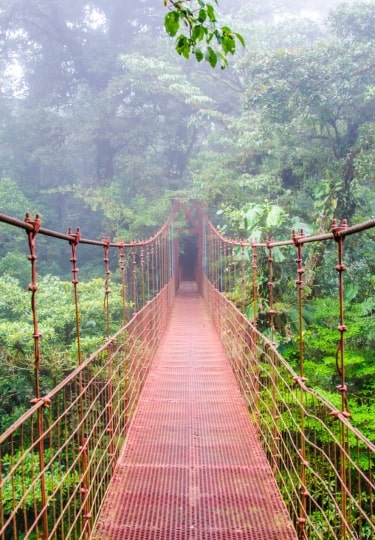Nestled between Nicaragua and Panama is colorful Costa Rica, alive with lush greenery, picturesque beaches, and moss-draped cloud forests. Puntarenas, a port city on the lush Pacific coast, is smaller than the capital, San José, and it offers easy-access adventures on land and by sea.
Before emerging as a top tourist destination, the port of Puntarenas, which occupies a long, skinny peninsula on the Gulf of Nicoya, was primarily used for exporting coffee. Now, it’s a gateway to a world of adventure as well as a weekend break destination for city-dwelling Ticos, as Costa Ricans are called.
Why Visit Puntarenas?
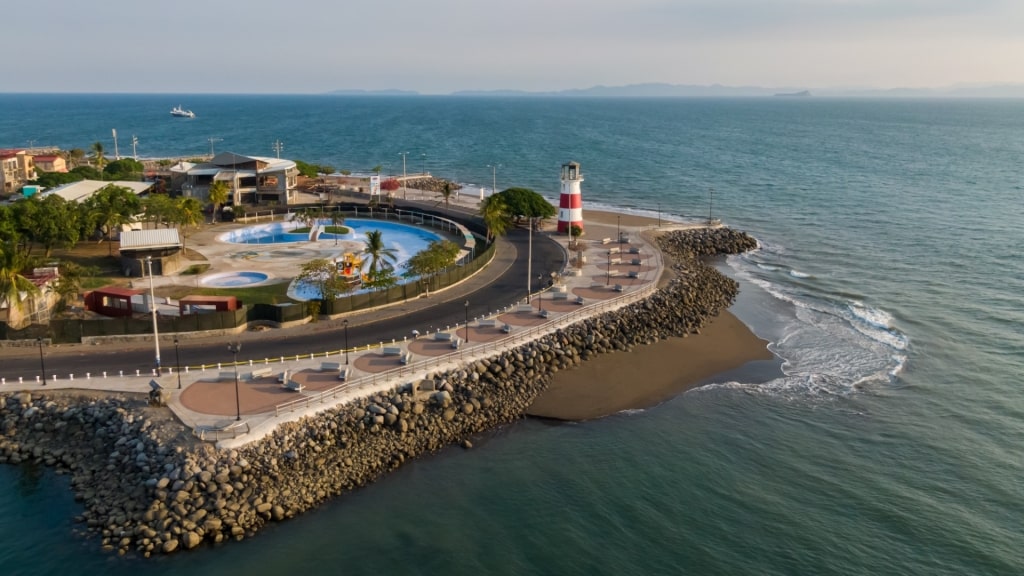
Puntarenas
Aptly named “sandy point” in Spanish, Puntarenas is a coastal region that features mountains, rainforest, and some of the best beaches in Central America. It’s bordered by Panama to the south and is a gateway to Costa Rica’s other regions and destination attractions.
The region’s national parks are a big draw for travelers, especially when it comes to adventure. River rafting, zip lining, horseback riding and ecological night walks are just a few ways to really live the “Pura Vida”—a local expression of happiness and enjoying life to the fullest.
Animal sightings, like catching a glimpse of the elusive and slow-moving sloth, or spotting scarlet macaws and capuchin monkeys, are a constant thrill.
History & Culture
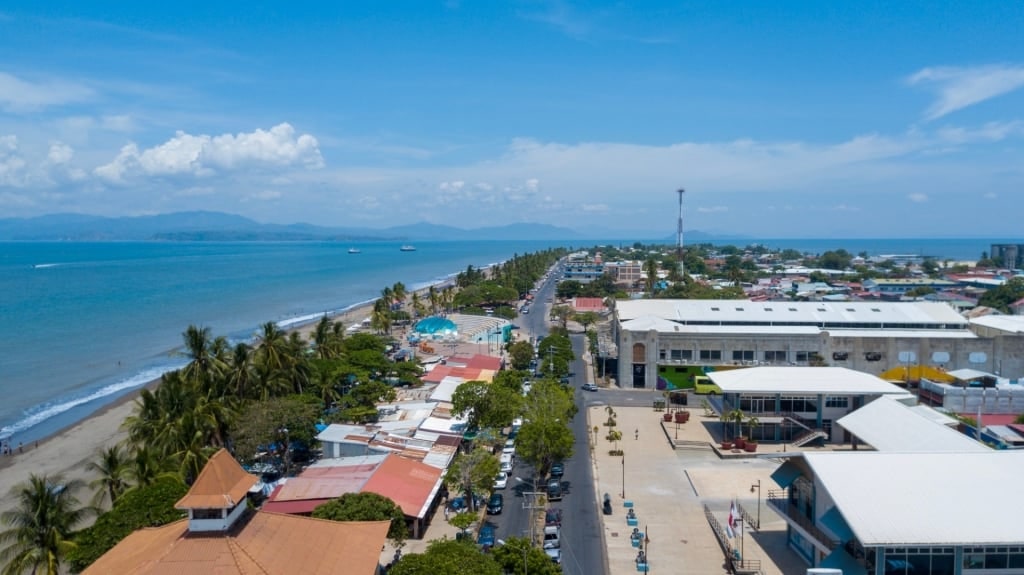
Puntarenas
Before the Europeans arrived in 1502, what’s now Puntarenas was inhabited by peaceful indigenous people. Christopher Columbus arrived in Costa Rica in 1502 and Puntarenas was settled in 1522.
However, it wasn’t until 1840 that the port became more developed. It was around this time that workers began exporting coffee in high volumes from Puntarenas, the closest coastal city to the country’s capital, San José.
Over the years, the province has emerged as a destination for agriculture, rest and relaxation, with culture taking center stage.
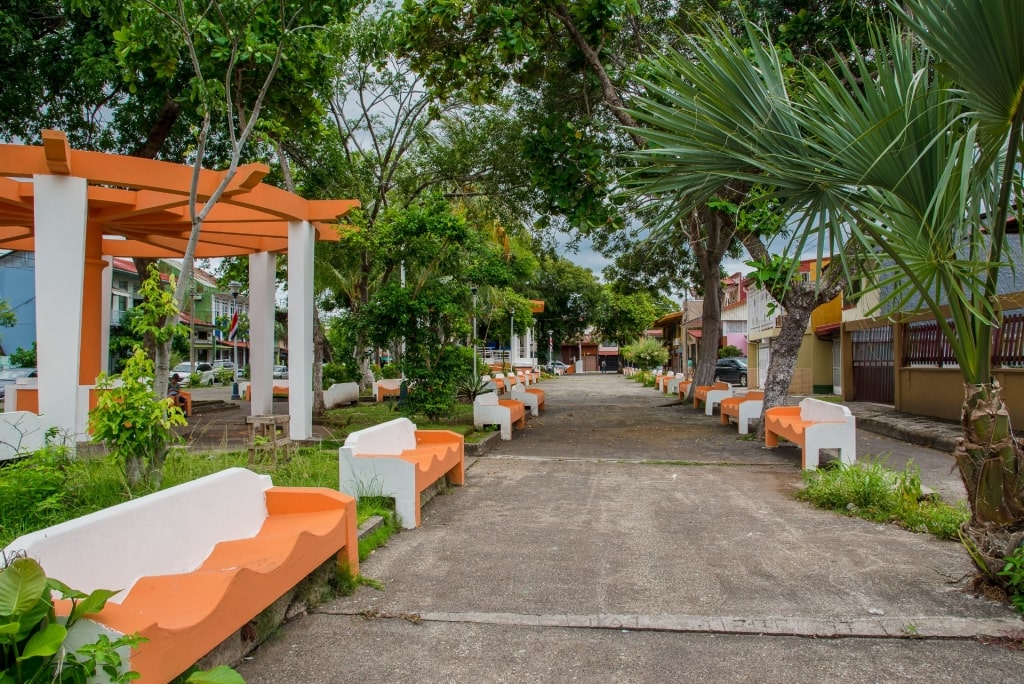
Downtown Puntarenas
Casa de la Cultura—which funnily enough used to be a prison—is part art gallery, part exhibition center and also serves as a performance space for cultural events hosted throughout the year. Outside, there are contemporary sculptures on display.
Also in downtown Puntarenas is the Museo Histórico Marino de la Ciudad de Puntarenas (the Marine History Museum), both a museum and an aquarium, visitors get a crash course on the indigenous populations of Puntarenas, the Nicoya Gulf and surrounding islands as well as the natural treasures of Isla del Coco.
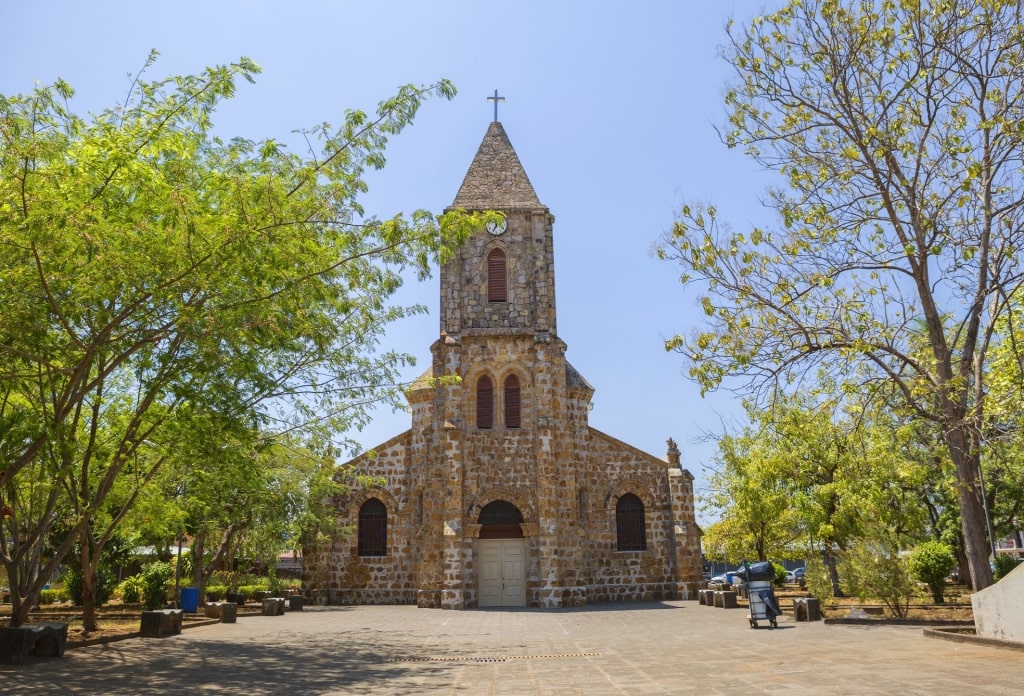
Puntarenas Cathedral
History buffs will appreciate a quick tour of Puntarenas Cathedral, built in 1902 with stone, mortar and brick. The church is still active today. Inside, the high ceilings serve as natural air-conditioning on an otherwise hot day. It’s a peaceful place to visit on the way to other downtown attractions.
Wildlife & Nature
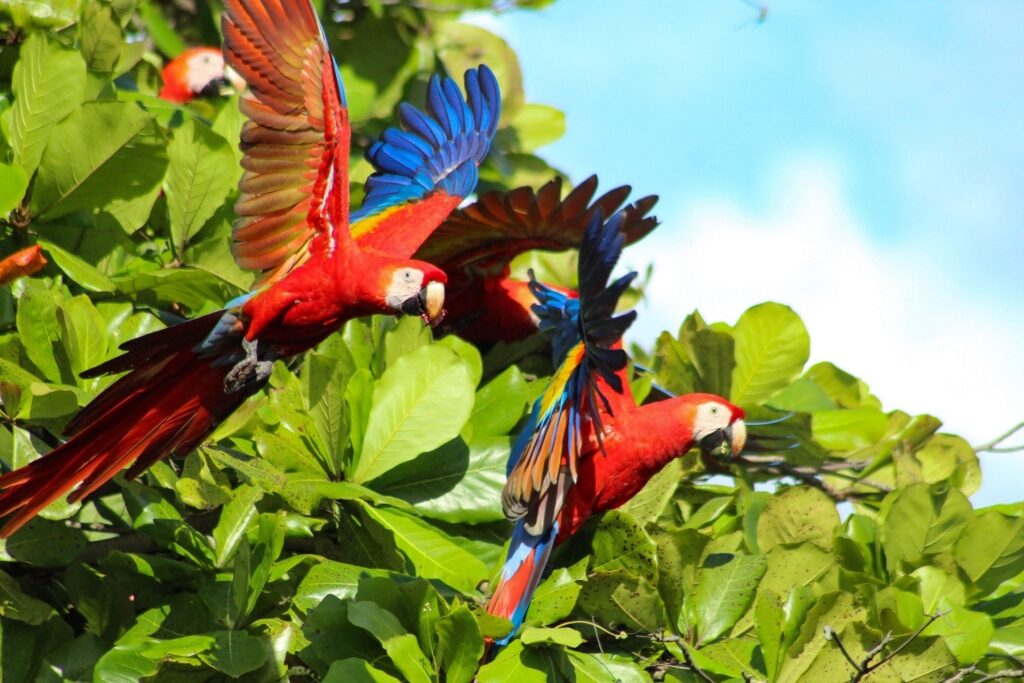
Scarlet macaws
Costa Rica is home to five percent of the world’s species, making it one of 20 countries with the highest biodiversity.
The province of Puntarenas is a habitat for all sorts of animals, including the scarlet macaw, yellow-throated toucan, squirrel monkey and brown-throated three-toed sloth. Puntarenas is made up of islands, beaches, little inlets, and protected parks.
Locals know a lot about Costa Rica’s nature and wildlife, and are active in protecting endangered species or those with decreasing populations.
From a young age, Costa Rican children learn the importance of conservation as part of their yearly curriculum. Many schools run programs where students participate in sustainability projects directly in their local communities.
Tips for Visiting Puntarenas
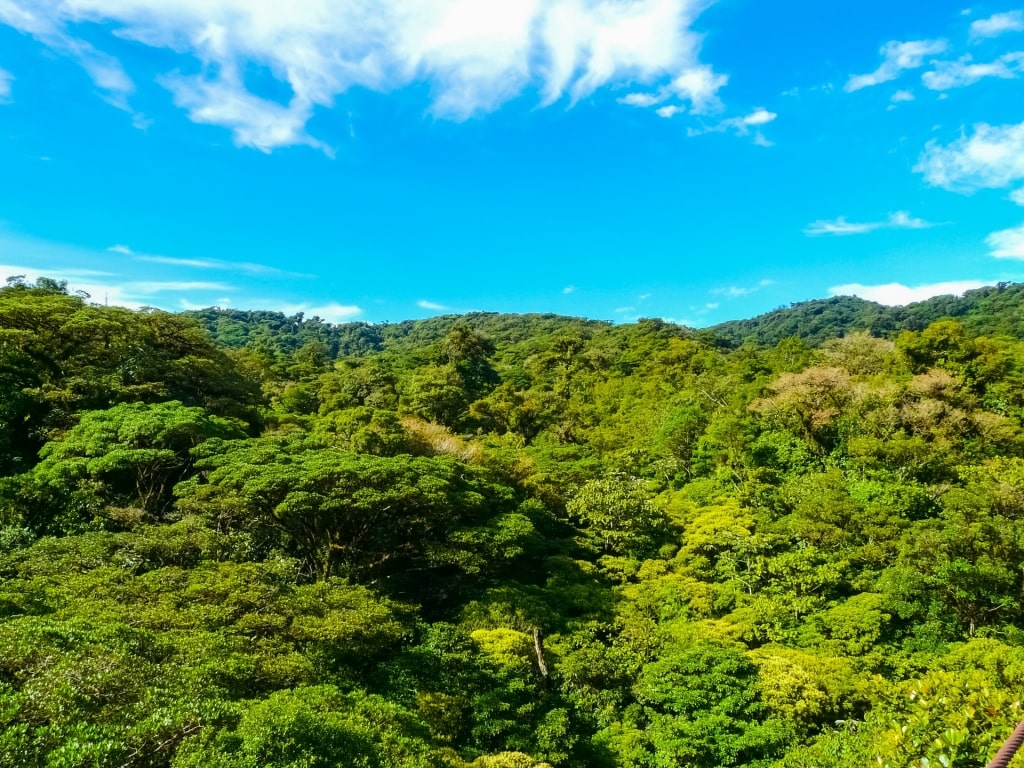
Monteverde Cloud Forest
When it comes to packing, comfort is key. Whether you’re lounging at the beach or trekking through the rainforest, you’ll need the right clothing. Comfortable shoes are a must, as are clothes made with breathable fabrics.
Nights can get chilly, so bring a hoodie or jacket to keep warm. As with any sunny destination, remember to re-apply that SPF every two hours. Remember your swimsuit, bug repellant, and a reusable water bottle.
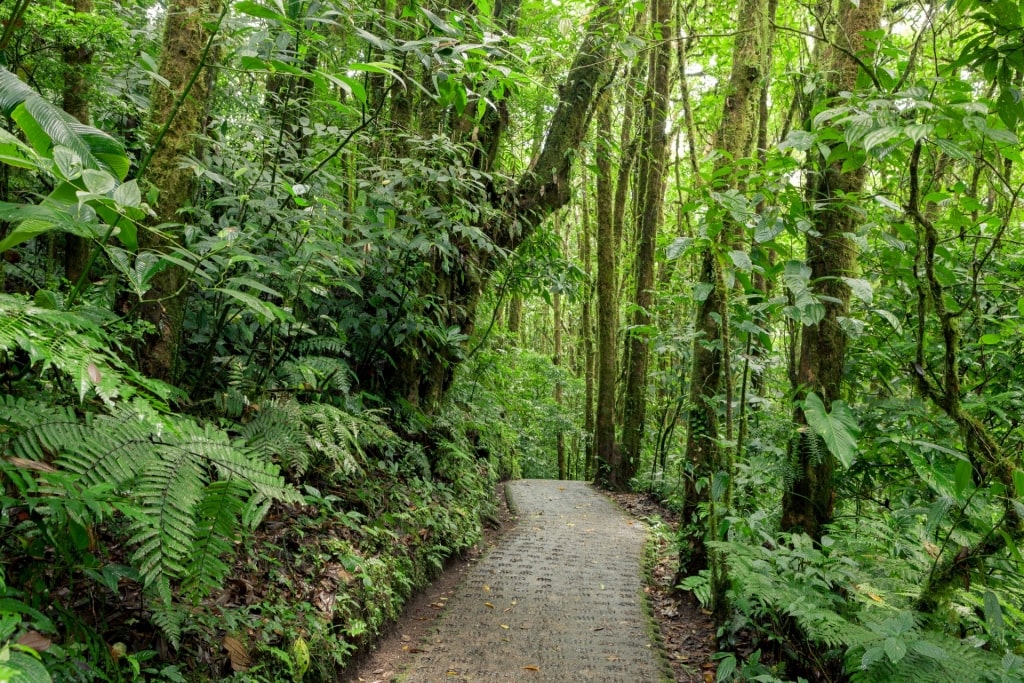
Monteverde Cloud Forest
When traveling through Monteverde’s cloud forests in particular, pack a few extra layers. The temperatures are cooler here compared to other areas of Puntarenas and there’s also more moisture in the air.
Glasses-wearers might want to opt for contacts so they don’t have to deal with their lenses fogging up. Bring sneakers or boots with good traction if you plan on hiking one of the trails.
Things to Do & Attractions in Puntarenas
Paseo de los Touristas
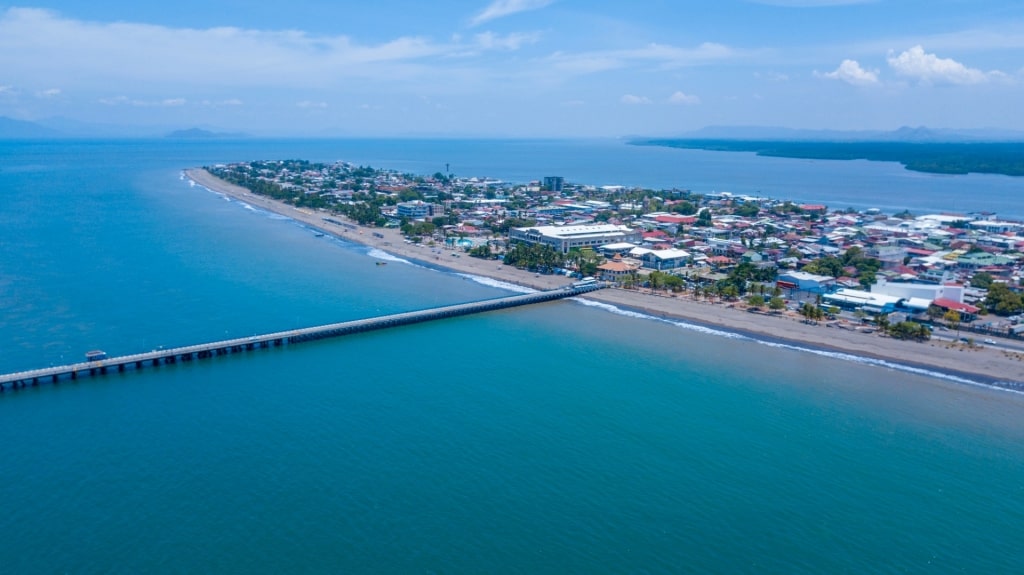
Paseo de los Touristas
As its name suggests, this boulevard is designed to be pedestrian-friendly and easy to navigate. It’s a great way to shop for souvenirs and eat your way through Costa Rica’s traditional dishes.
Take your time strolling through the various shops or take in the seafront views over a glass of wine. From the paseo, you can explore the rest of downtown Puntarenas.
NATUWA, Macaw Conservation Sanctuary
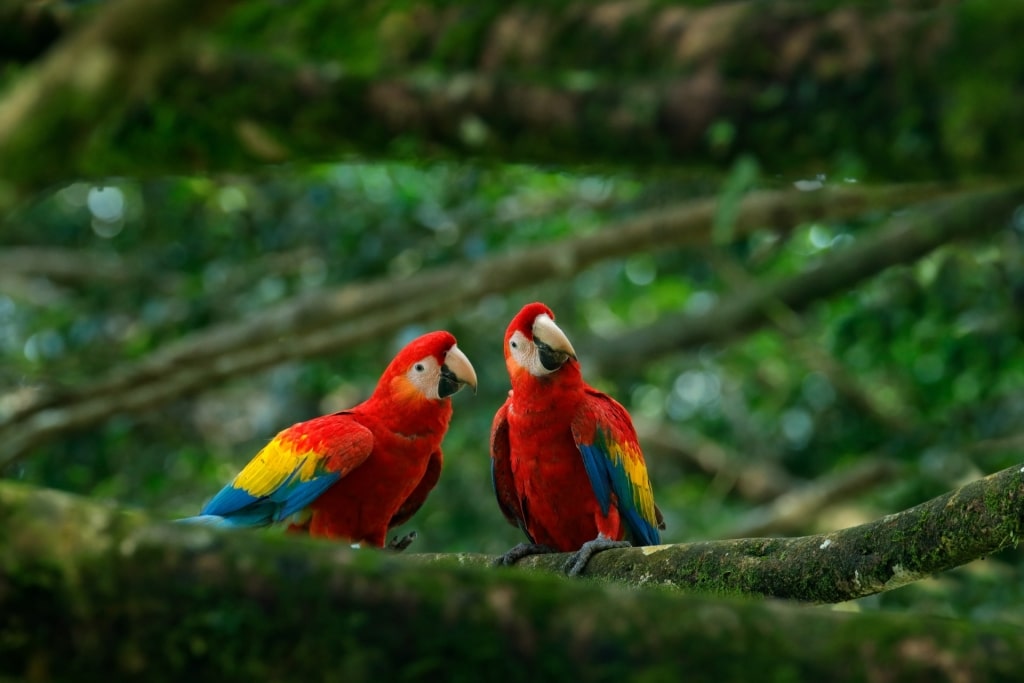
Scarlet macaws
Scarlet macaws build their homes in forest environments (humid, deciduous and tropical evergreen) on the Pacific Coast so naturally, they’ve made their home in Costa Rica.
Notice that these vibrant-colored birds almost always fly in pairs. This is because scarlet macaws mate for life and therefore rely on their partner for food and other survival needs. It’s both romantic and poignant; when one of the pair dies, the other dies soon after.
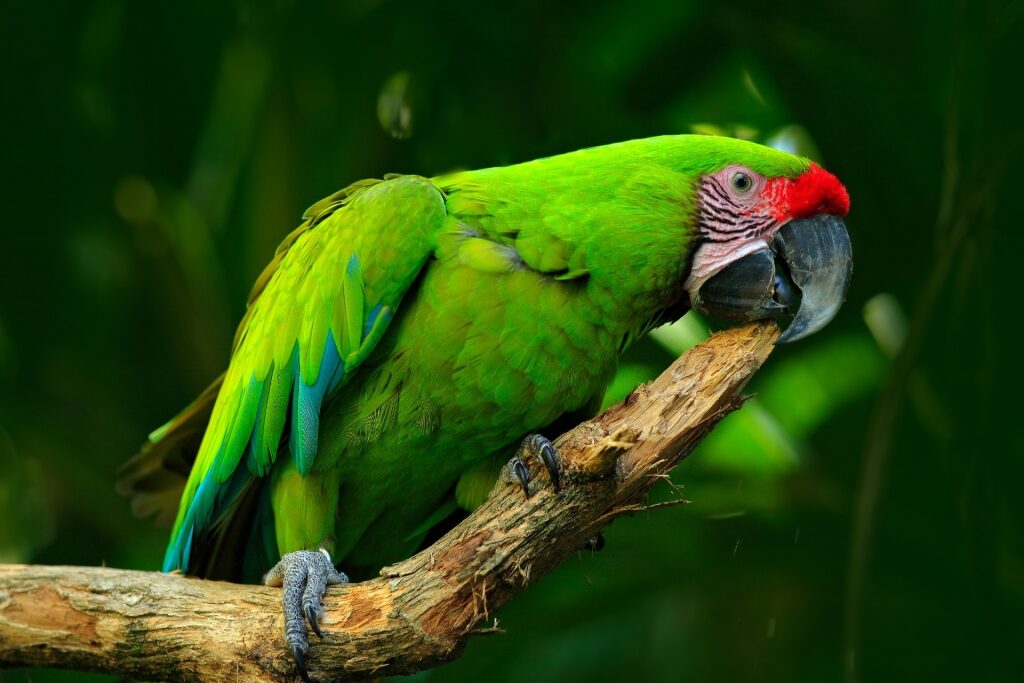
Green macaw
The NATUWA, Macaw Conservation Sanctuary is a Costa Rican wildlife conservation charity dedicated to saving and protecting this species. Both great green macaws and scarlet macaws are bred not for pet trade but to be released in the wild and to thrive.
Birds at the sanctuary fly freely, as the environment mimics the conditions they’d find in the wild.
Monteverde Cloud Forest
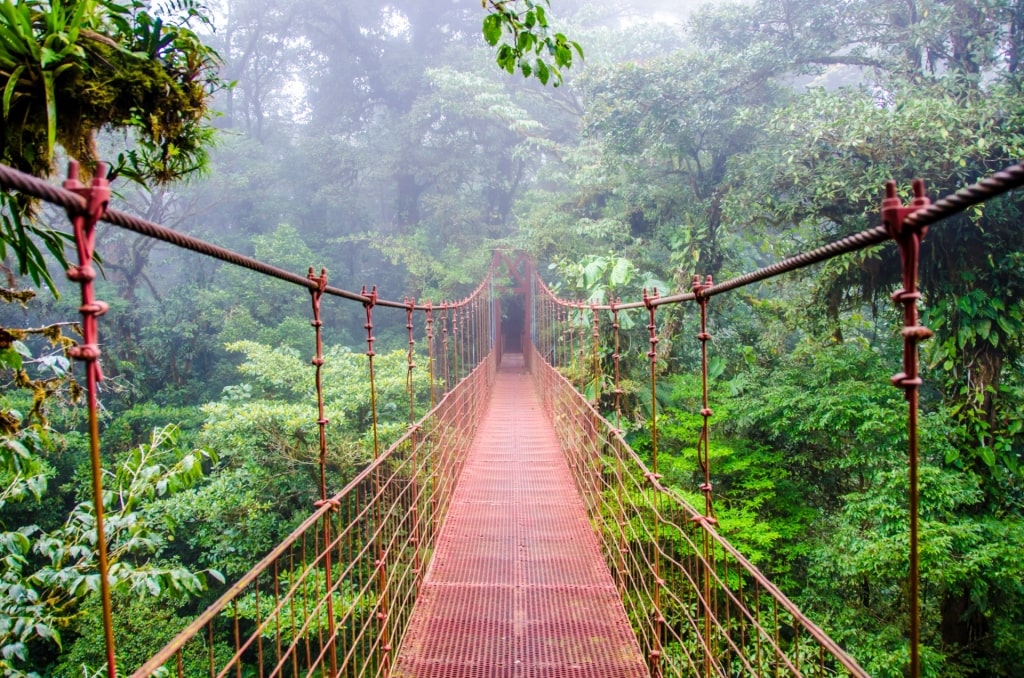
Monteverde Cloud Forest
Never heard of a cloud forest? You’re not alone. Cloud forests only form in tropical or subtropical mountain areas and cover just one percent of global woodlands, making them hard to come by.
The clouds eventually condense onto the leaves of trees and later fall onto plants below, feeding the forest. The fog and low-hanging clouds create an almost mystical experience of walking in mid-air.
At Monteverde, there are a series of suspension bridges that stretch between 95 and 253 feet and rise some 126 feet above the forest floor. Unless you’re afraid of heights, this is a rare opportunity to get a bird’s-eye view of the landscape in all directions.
Alternatively, there are also trails at ground level that take you deep into the cloud forest.
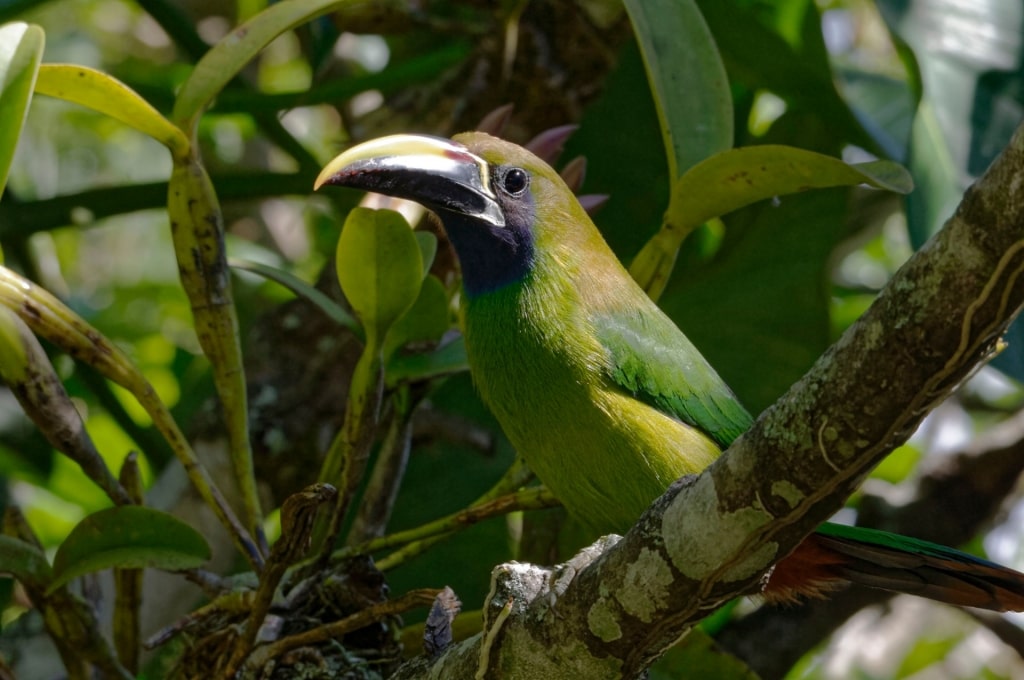
Emerald toucanet
Monteverde Cloud Forest Reserve is home to around 100 species of mammals, 400 species of birds, and an estimated 1,200 species of amphibians and reptiles. It’s also one of only a few habitats where you could encounter ocelots, jaguars, and mountain lions.
The butterfly gardens are nothing short of magical, with thousands of delicate species in dazzling colors fluttering in all directions. From there, a short hike leads to the frog and amphibian exhibits.
Read: Best Places to Visit in Central America
Santa Elena Cloud Forest Reserve
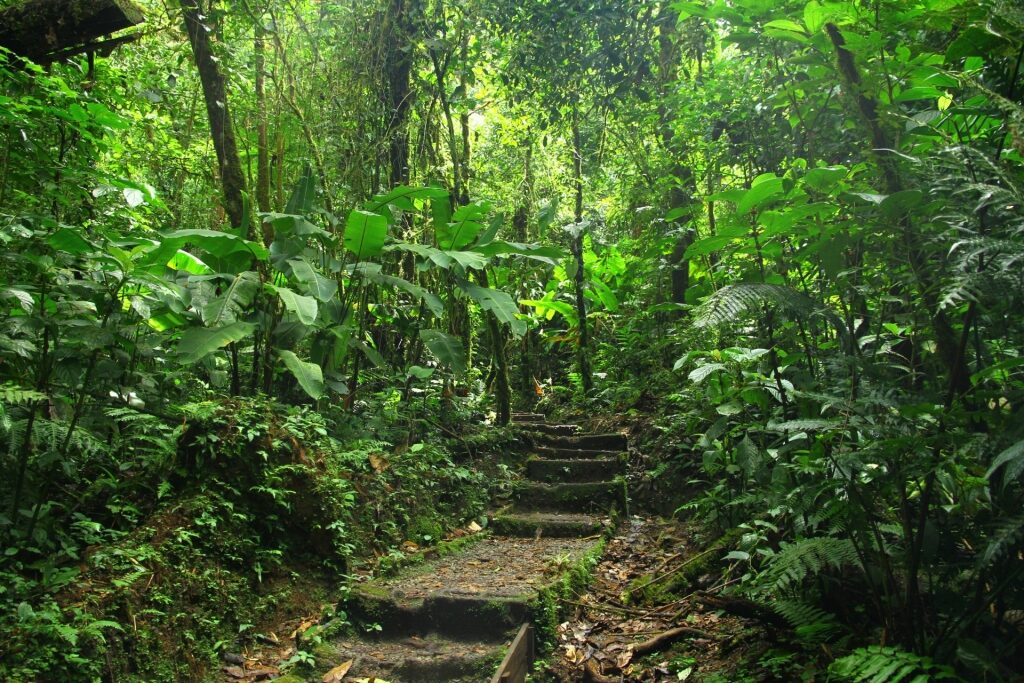
Santa Elena Cloud Forest Reserve
Spot spider monkeys in nearby Santa Elena Cloud Forest Reserve. As the second of three cloud forests in the Monteverde area, Santa Elena is considered the “sister” reserve. It’s slightly higher in elevation, reaching 5,250 feet and spanning seven-and-a-half miles of trails, and more humid.
Similar to the Monteverde Reserve, Santa Elena has impressive views and well-defined hiking trails. On clear days, you can even see the Arenal Volcano from the observation tower.
Doka Estate & Espiritu Santo Coffee Plantation
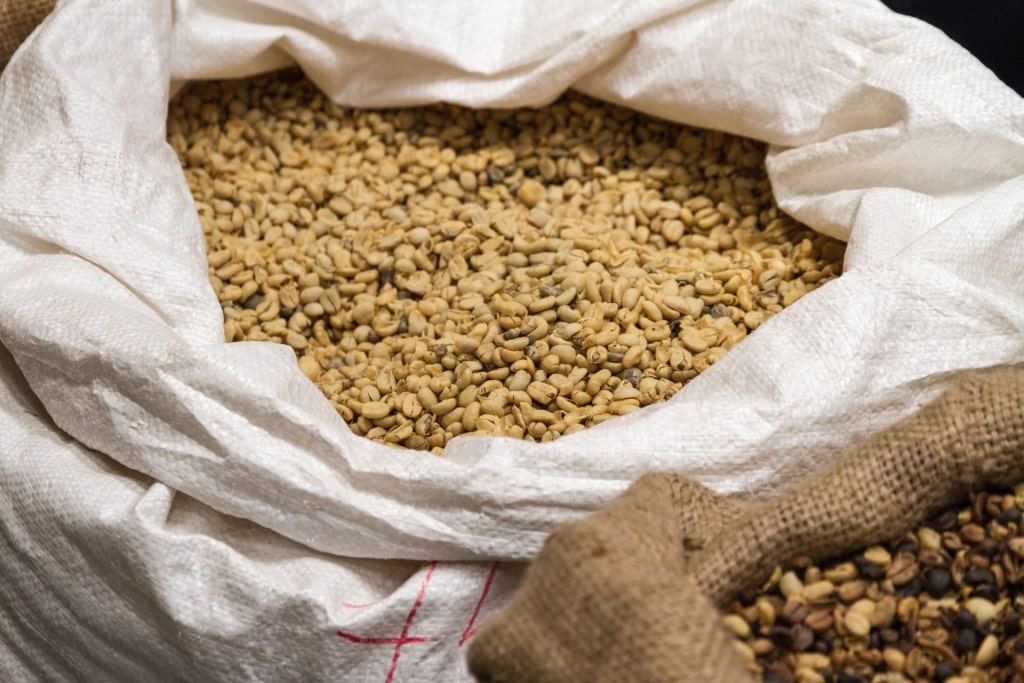
Coffee beans of Doka Estate
Coffee is one of the country’s biggest exports, so Costa Ricans know a thing or two about making a really good brew.
Doka Estate is the oldest wet coffee mill in the country and visitors can learn the unique coffee-making process from the Vargas Ruiz family who have been running the mill for 70 years and counting.
The estate is also a declared historical and architectural heritage site. Interestingly, coffee is entirely produced using water and without electricity.

Costa Rican coffee
Alternatively, Espiritu Santo Coffee Plantation is a 670-acre farm that employs more than 2,300 farmers. During a guided tour, travelers learn the art of coffee-making, from planting to brewing.
Even if you don’t remember everything covered during the tour, you’re likely to leave with a deeper appreciation for your morning cup of “Joe”.
Iglesia de Nuestra Señora de las Mercedes

Iglesia de Nuestra Señora de las Mercedes Photo by The LEAF Project on Flickr, licensed under CC0 1.0
The Iglesia de la Nuestra Señora de las Mercedes in Grecia is intriguing to see up close. Painted in a bright red color, the church dates back to the 19th century and was made entirely of imported steel from Belgium.
Nobody knows the real reason why this church’s facade was made with steel, but that hasn’t stopped people from guessing. One local legend suggests that the church was actually meant to be located in Greece but found its way to Grecia instead.
Carara National Park
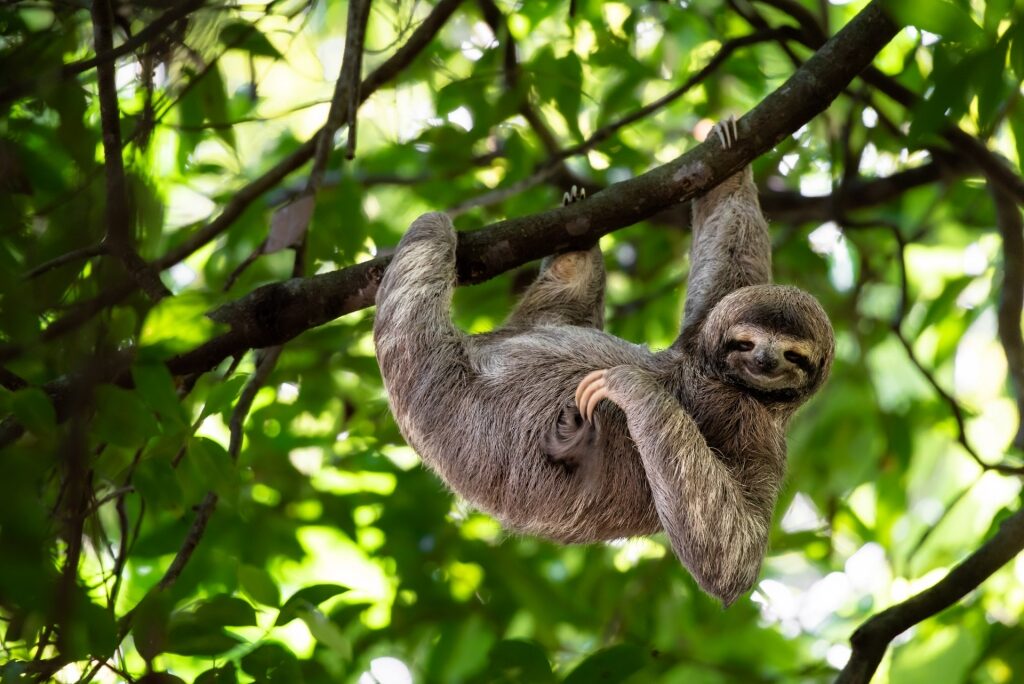
Sloth
This national park located a 45-minute drive from Puntarenas, reaches elevations of 1,640 feet and represents both tropical rainforest lowland and tropical dry forest habitats. Close to 50% of Costa Rica’s avian species are found within the park.
You might also catch a glimpse of the two-toed or three-toed sloths that Costa Rica is known for. They move slowly, making their camouflage even more effective. Spider and howler monkeys are quick to make appearances, too.
This is a smart alternative to Manuel Antonio National Park, which is just over two hours from the city, if you can’t squeeze both into your trip. The environments are similar, so you’ll see many of the same animals.
Tarcoles River
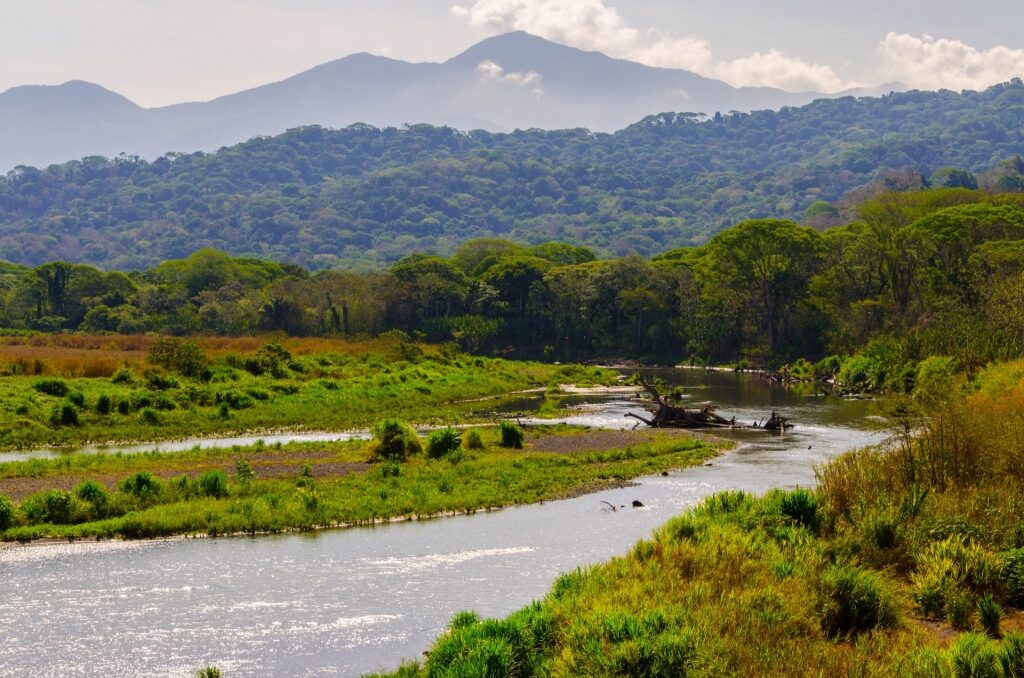
Tarcoles River
Get your heart pumping with a cruise along one of the world’s largest crocodile habitats. The crocodiles here can grow to be 12 feet long and are impressive specimens. Alternatively, view the crocodiles from a distance. There’s a bridge that overlooks the river and offers a different vantage point.
Remember to look up, too; you might catch a glimpse of a toucan perched in the trees, or capuchin monkeys scampering through the canopy.
Isla San Lucas
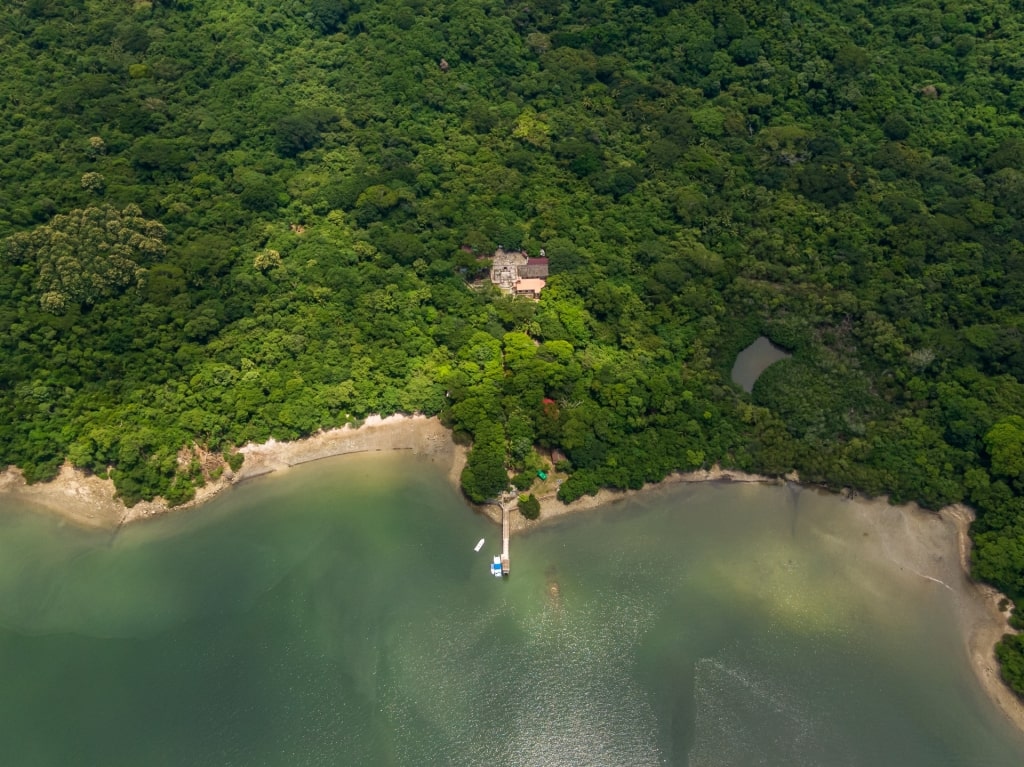
Isla San Lucas
Whether you’re a kid or just a kid at heart, it’s hard not to marvel at the marine life of Isla San Lucas. The former prison, a 30-minute boat ride from the mainland, was revamped into a wildlife refuge, giving new life (and light) to its shadowy past.
The prison officially closed in 1991 and was recognized as a National Wildlife Refuge in 2011, with howler monkeys, deer, and bats all prolific here. As you explore the island, keep your eyes peeled for sharks, dolphins, and sea turtles in the water.
Botanical Orchid Garden La Garita
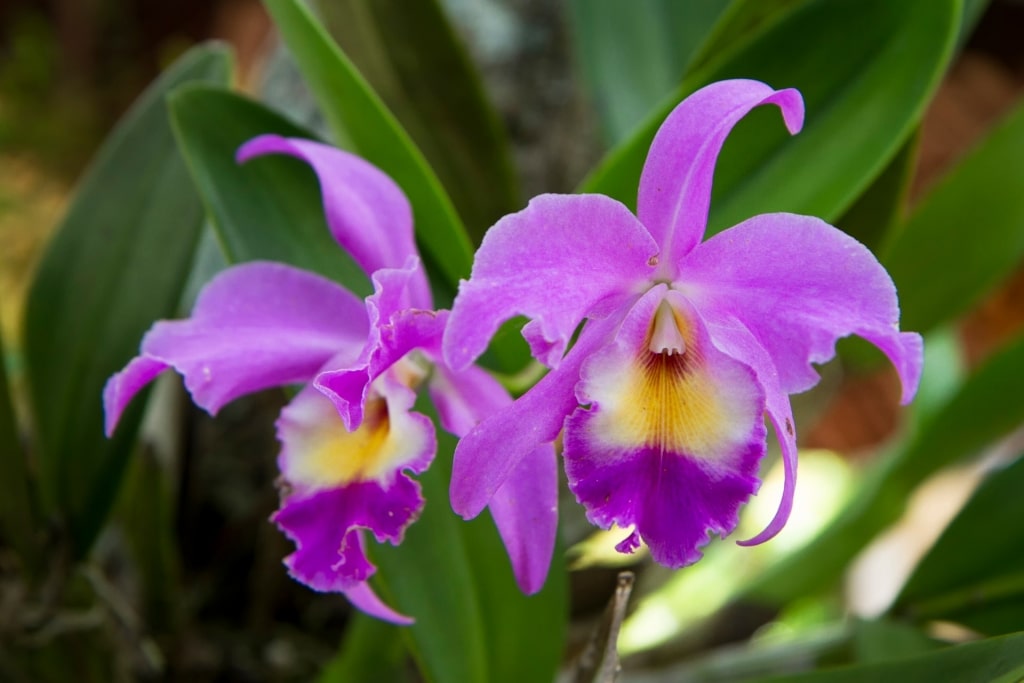
Orchid
The Botanical Orchid Garden in La Garita features orchids, trees, plants, and birds. The property itself is fairly small, making it easy to navigate your way around. It’s hard to tell, but the majority of the orchids growing here were produced in a laboratory. The owner didn’t want to remove any orchids from their natural habitat, so new ones were grown instead.
The birds you see around the property—parakeets and parrots to name a few—were rescued from the wild where they had trouble thriving.
In addition to orchids, there are also common plants such as tiger claw, cinnamon, vanilla, and beehive ginger. Gardeners (and gardeners-to-be) will be in their happy place here.
Food & Drink
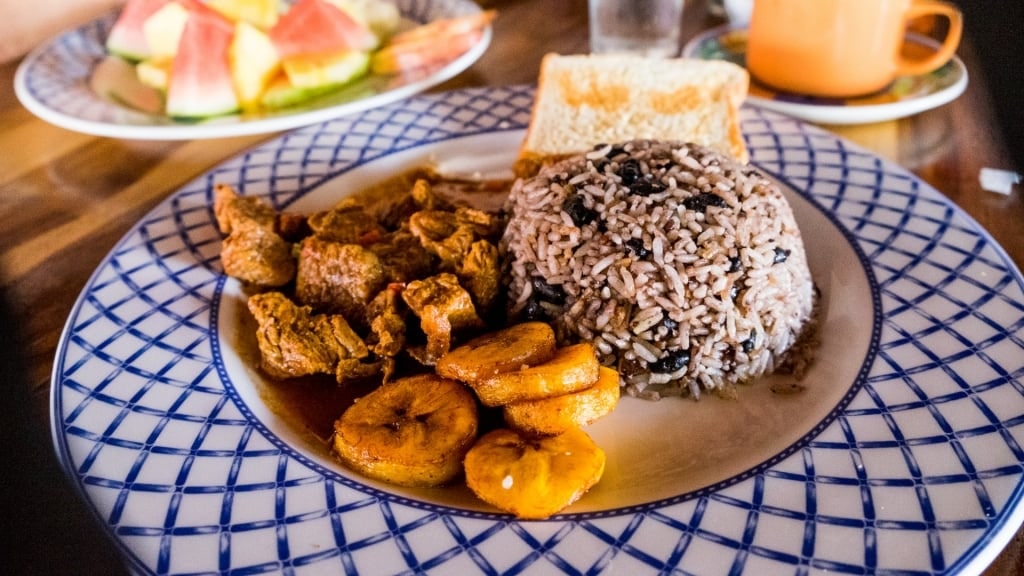
Gallo pinto
Whatever adventure you choose in Puntarenas, you will definitely work up an appetite. Luckily, Costa Rican food is both filling and flavorful.
The “gallo pinto” (“spotted rooster”, and not actually rooster at all) is the country’s national dish and consists of rice and beans. Get used to those two ingredients because they’ll be part of pretty much every meal, alongside salad, plantain and tropical fruits.
For a truly local experience, pull up a chair at Soda el Guacimo. Located in the village of Tarcoles—named after the river where crocodiles casually lounge about—meals from this no-frills eatery are cooked over an all-wood fire.

Churchill
Take your pick of food from more than 30 grocery stalls and soda-type (meaning small and local) eateries at Mercado Municipal. Or head for Avenida Central. Here, Kiosco Mar del Plata serves the Churchill, a traditional and very sweet snack made of fruit, syrup, milk (condensed or powdered) and shaved ice.
For beachfront views and a party vibe, try Isla Coco’s Bar & Grill.
Best Time to Visit Puntarenas
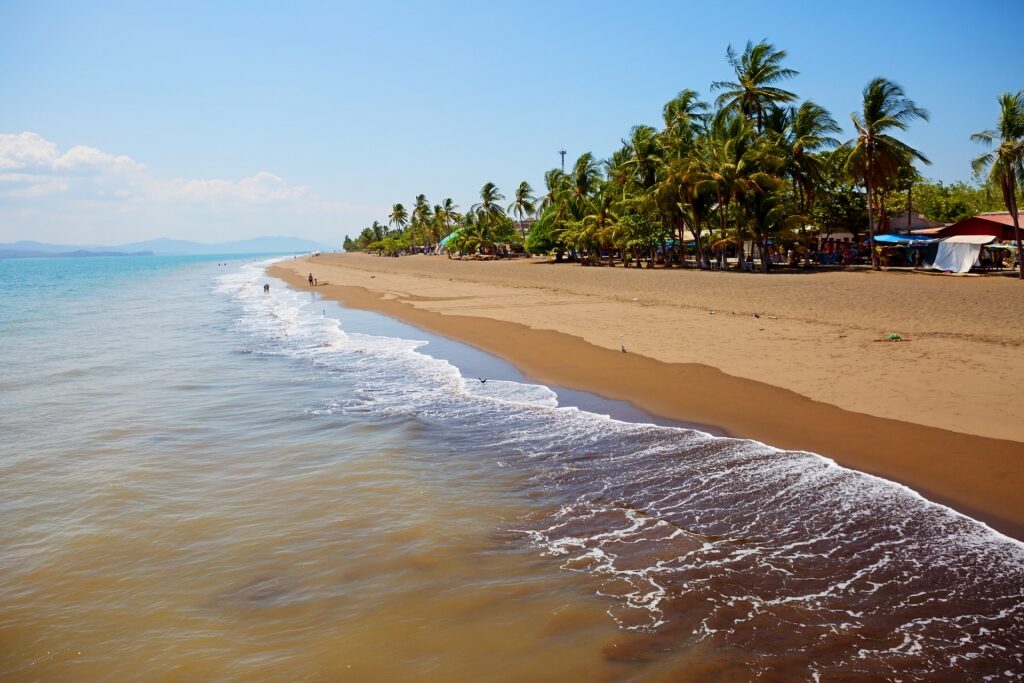
Puntarenas
There’s no “wrong” time to visit Puntarenas—and Costa Rica in general—but it’s always a good idea to know what you’re in for weather-wise. The dry season lasts from mid-December through April.
During these months, you’ll have mostly sunny weather as you explore the rainforests, beaches and wildlife of Puntarenas. You may encounter the occasional short, sharp shower, which clears the air and is typical of the tropics.
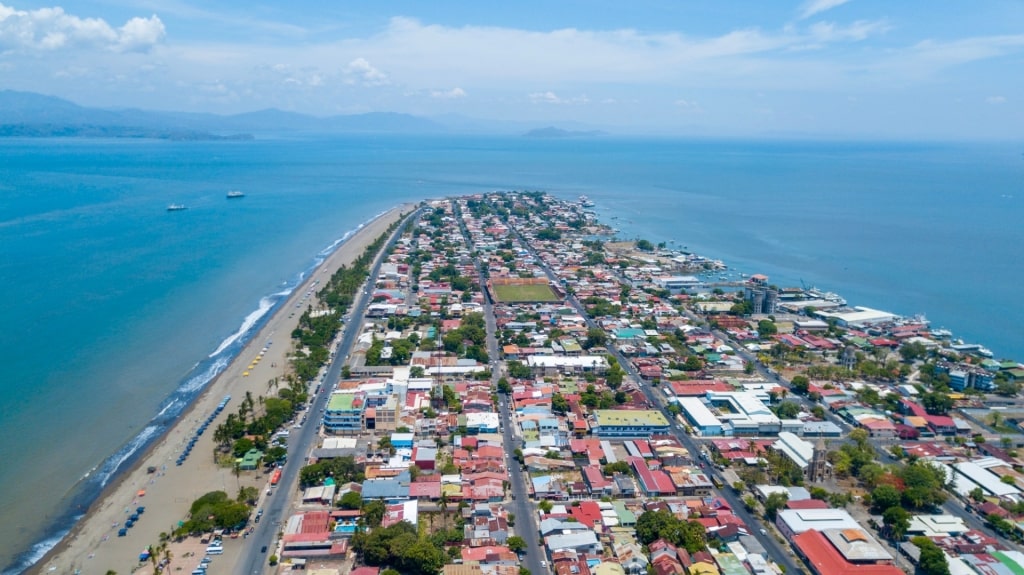
Puntarenas
Experience wildlife, nature, and culture on a cruise to Puntarenas, Costa Rica. Browse our cruise itineraries online and plan your next adventure.
